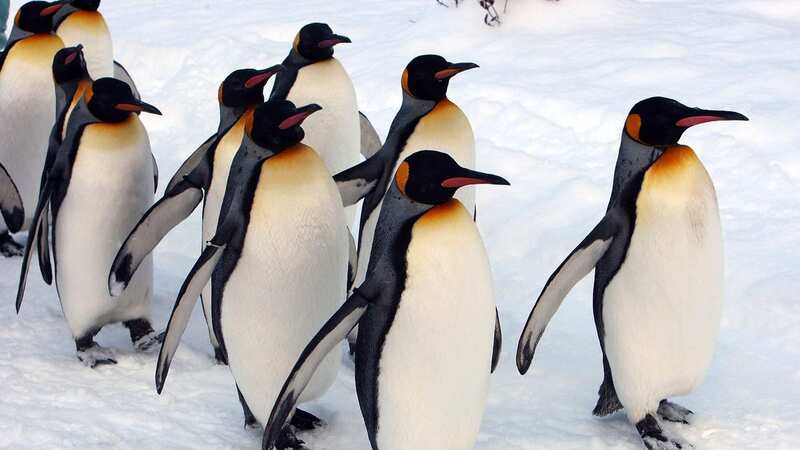Penguins are the fastest swimming birds in the world - thanks to their wings

Penguins are the fastest swimming birds in the world thanks to aeroplane-style wings, according to new research.
Gentoos, identified by their bright orange bill, can reach speeds of up to 22mph in the water.
Now scientists have worked out their phenomenal propulsion is due to unique feathering that generates thrust.
It gives them wings, or flippers, that “bear some resemblance to an aeroplane’s,” said lead author Dr Prasert Prapamonthon.
And the discovery opens the door to better and swifter marine robots. It has implications for search and rescue missions.
 James Bond books to be rewritten to remove offensive references
James Bond books to be rewritten to remove offensive references
An expedition is currently in a race against time to find five people on board missing submersible Titan.
Dr Prapamonthon, of King Mongkut’s Institute of Technology in Thailand, said: “Penguins’ superior swimming ability to start or brake, accelerate or decelerate and turn swiftly is due to their freely waving wings.
“They allow penguins to propel and manoeuvre in the water and maintain balance on land. Our research team is always curious about sophisticated creatures in nature that would be beneficial to mankind.”
The Thai and Chinese group developed a hydridynamic model to explore forces and flow structures created by penguins’ unique and sophisticated wings underwater.
Experiments showed to maximise aquatic instead of aerobic efficiency, they are shorter and flatter than those of flying birds.
The cute and enigmatic animals can also adjust swimming posture by changing the angle of their wings to reduce resistance, flapping and ‘pitching’ - an up or down movement that mirrors those seen in aircrafts during take off and landing.
Their dense, short feathers can also lock air between the skin and water to reduce friction and turbulence.
The computer simulations also took into account a host of other factors including amplitude, frequency, direction and fluid parameters such as velocity and viscosity.
Dr Prapamonthon said: “We proposed the concept of angle of thrust, which explains why finned wings generate thrust.
“Thrust is primarily determined by the angle of attack and the relative angle of the wings to the forward direction.
 Elderly penguins have cataract surgery and custom lenses fitted in 'world first'
Elderly penguins have cataract surgery and custom lenses fitted in 'world first'
“The angle of thrust is an important concept in studying the mechanism of thrust generated by flapping motion and will be useful for designing mechanical wing motion.”
Gentoos occupy Antarctica, Argentina and the Falkland Islands. They are mostly black from head-to-tail except for a stark-white front - and distinctive bill and white eye patches.
They are the third-largest species of penguin behind Emperor Penguins and King Penguins respectively.
They live in colonies that range in population from less than 50 to thousands of breeding pairs.
Like most penguins, Gentoos spend all day out foraging in the shallows, chasing schools of krill small fish, squid and crustaceans.
They will occasionally venture up to 16 miles offshore and dive to 650 feet deep in search of enough food to sustain a brood of chicks. A Gentoo Penguin can dive for food up to 450 times per day.
Their swimming skills allow them to adapt to limited food and threats of predation from leopard seals, sea lions and orcas.
With a total breeding population of approximately 387,000 pairs, gentoo penguins are the least abundant of the penguins found on the sub-Antarctic islands.
In their southern range, especially around the Antarctic Peninsula, populations may be increasing. Overall, their global population is considered stable.
The findings can guide the design of aquatic vehicles by quickly estimating propulsion performance without high experimental or computational costs.
In future, the team plans to examine a more realistic 3D penguin model. They will incorporate different wing properties and motion, such as starting, braking, turning, and jumping in and out of water. The study is in Physics of Fluids.
Read more similar news:
Comments:
comments powered by Disqus

































